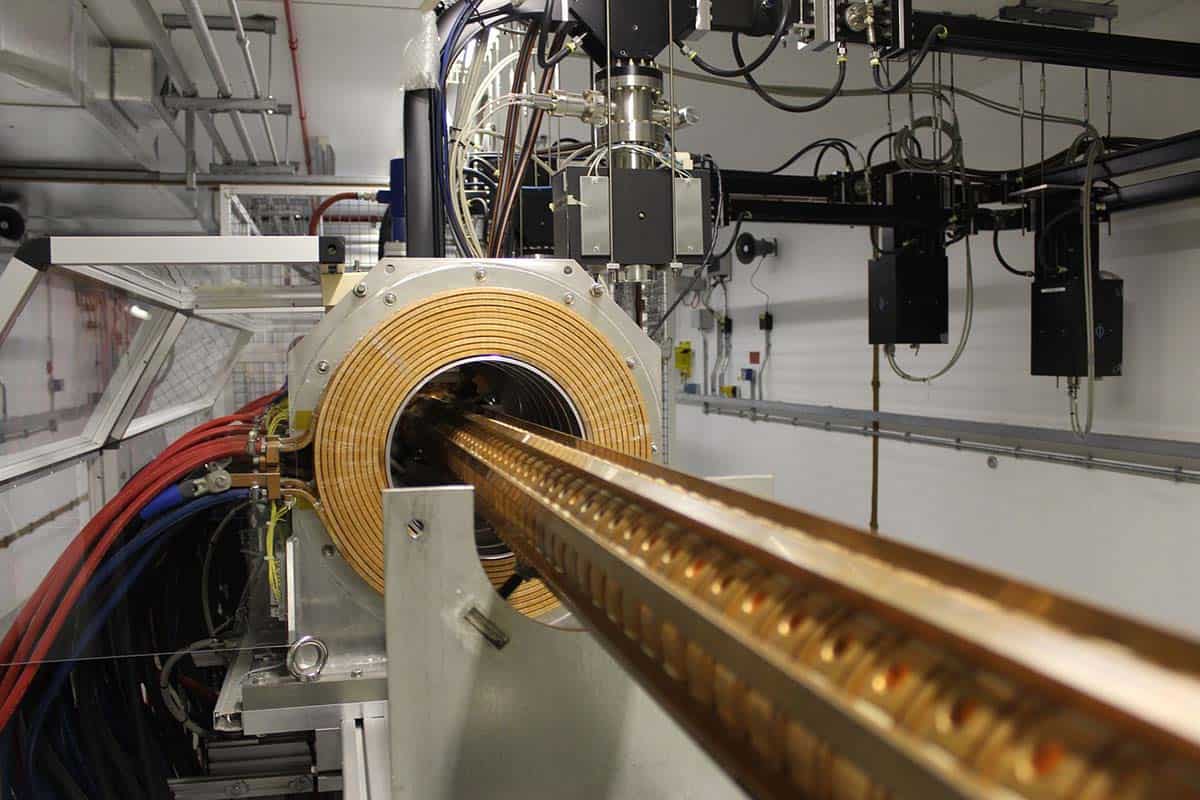
Particle accelerators are time-consuming and cost a fortune to build. Therefore, the question, what is the main purpose of a particle accelerator is a relevant one. If these machines were not that useful, there wouldn’t be any need to build one, right? So, let’s find out the reason particle accelerators are built. The answer to this question will enable us to understand the importance of this machine.
So, back to the question, what is the main purpose of a particle accelerator?
The main purpose the particle accelerator serves is to provide a proper understanding of our universe. There is a belief that over 95% of the universe is unknown to humankind. But with the help of the particle accelerator, with the current largest accelerator being the large hadron collider, researchers may be able to broaden our understanding.
So, that is the primary purpose of the particle accelerator, but there is more you need to know. So, continue reading to get more information about this topic.
What Are Particle Accelerators?
You don’t need to be a scientist or a particle physicist to know or seek knowledge about particle accelerators. These machines are designed for the benefits of humanity, to make life better. So, particle accelerators are essential to every one of us.
So, before we go deeper, let’s understand what particle accelerators are. Why are they called particle accelerators? Well, you may have come across the name “the Large Hadron Collider.” It’s a particle accelerator, and one of the largest of the lots. The Large Hadron Collider is in Switzerland. This machine occupies a vast portion of land, financial resources, and controlled by the CERN.
By definition, particle accelerators are machines that can speed up charged particles. The particles tend to accelerate in incredibly higher energies and speeds but remain housed a specially built beam.
Particle Accelerator: How Does It Work?
Earlier, we talked about the numerous benefits of the particle accelerator. If you take a look at what scientists and researchers have achieved in the past years with this machine, you will understand that the sky is the starting point. There are even bigger things to come.
But the main question is, how do these machines work? How do particle accelerators work and provide scientists with great insight relating to the origin of our universe, advanced security screening in real-time, and show promise in the fight against cancer? Let’s look at how this machine works.
Firstly, the primary goal of this machine is to accelerate elementary particles, which includes protons or electrons, and they do so in incredibly higher energies.
Now, how do particle accelerators work? Another name for these machines is “atom smasher.” Also, they all work the same way, irrespective of size or shape.
An accelerator or atom smasher uses an electric field to accelerate and boost the energy of particles. The energy is also not only steered but focused by a magnetic field.
The particle accelerated can be protons or electrons. Also, when stimulated, the beam of particles tends to travel inside a specially built vacuum, without which, the movement of the particles would be obstructed.
The vacuum allows the beam of particles to move in a dust and air-free environment, which would have ordinarily obstructed their movement. Additionally, the beam of particles is steered and focused by a series of electromagnets, while traveling via the specialized vacuum tube.
Furthermore, around the particle accelerator, there is an electric field space, which changes from a positive to the negative field, with every passing frequency. It also creates radio waves, which helps in accelerating particles, but this time, in bunches.
The particles are directed at diverse fixed targets. It could be a thin metal foil, or two beams of the traveling particles can be made to collide with each other. Now, when this collision takes place, there are particle detectors on standby to record and also reveal insightful data regarding the collision.
The record usually reveals the radiation produced and particles involved in the collision, between the targeted object and beam of particles.
So, that is how particle accelerators or atom smashers work.
Components Of Particle Accelerators: Things You Need To Know
Every machine has various components or parts, which work together to produce specific results or performance. If a single piece is missing, the device won’t function. The same thing applies to particle accelerators.
Every part of the particle accelerator is essential and worth looking at for a better understanding and appreciation of this incredible invention.
However, different sizes of particle accelerators exist. Nevertheless, the much talked about particle accelerator, as of the time of writing, is the LHC (large hadron collider).
It’s a gigantic machine, an atom smasher weighing over 38 tonnes. The device also occupies a vast landmass, which is approximately 27km, and buried 100 meters beneath.
So, you should expect such a vast machine to have a wide array of components.
Without wasting any further time, let’s check out the various components of the particle accelerator.
- Monitor systems– Particle accelerators have monitor systems, such as radiation detectors and closed-circuit television. Their primary function is for safety reasons and lets observers know what’s happening inside the machine from time to time.
- Cooling systems – The magnets tend to generate a high amount of heat when the machine is in use. Unfortunately, if the heat is not handled properly, it could damage the device and be dangerous to the people around it. So, it’s the cooling systems’ job to keep the magnets cool.
- Shielding – This component of the particle accelerator is very critical. It ensures the safety of the technicians, the public, and operators in the environment where the machine is.
- Detectors – Operators need to be able to identify the radiation or particles produced during every experiment. But they cannot do this without this detector. So, these sensors are essential components of the particle accelerator. They show the particles or radiation generated from every collision or experiment carried out with the machine.
- Copper tube – The vacuum located inside this tube is where the beam of particles usually travels. Without this tube, the beam particles would face obstacles. Dust and air particles will prevent them from traveling alone, and this could threaten the accuracy of the results from each experiment.
- Targets – The target refers to what particles accelerated are meant to collide with once acceleration begins.
- Klystrons – these microwave generators are also among the critical components that particle accelerators have. They tend to produce waves on which accelerated particles usually ride on.
- Vacuum systems – beam particles travel through the vacuum, a system that removes dust and air from the particle accelerators’ tube.
- Storage ring – here is where particle beams are kept, mainly when they are not in use.
- Electrical power system – particle accelerators use electricity and, thus, requires an electrical power system. The function of the electrical power system is to generate electricity to power the entire machine.
- Electromagnets – without electromagnets, there won’t be a particle accelerator. They help to steer the particle beam when the need arises and make sure the particles remain in the narrow beam while traveling inside the vacuum.
- Computer systems – computers serve numerous purposes. They help technicians to operate the particle accelerators and also analyze data derived from each experiment conducted.
How Promising Are Particle Accelerators?
A particle physicist will tell you that a particle accelerator is essential. And yes, it has proved beyond any reasonable doubt that it can unveil numerous things about our universe.
When we talk about particle accelerators, we are directly referring to the LHC (large hadron collider). It is the biggest accelerator at the moment, and the one the CERN is relying on to deliver insightful scientific discoveries.
By the way, particle accelerators are not meant for fun. They are built to carry out in-depth research about our universe, for the benefit of humanity.
Impressively, we have tasted the impact of these machines in diverse fields. So, it holds great promise for the future, as far as particle physics is concerned. In medicine, the most critical and impactful application of these machines is in diagnostic imaging and radiotherapy via the use of radionuclides. Both processes play a vital role in cancer treatment.
Particle accelerators have also been helpful in the areas of environmental clean-up and security.
Conclusion
The question is what is the main purpose of a particle accelerator? Well, firstly, particle accelerators are essential in particle physics and for research purposes. Otherwise, CERN, which comprises of several European countries wouldn’t have made financial contributions towards building one. This machine has the power to unveil the deep things about the universe and make an impact across several fields. We have already seen the potentials of these machines in medicine, security, and our environment. So, let’s hope it would answer more critical questions about the universe and offer more benefits across diverse fields.
You May Like These Articles As Well:








